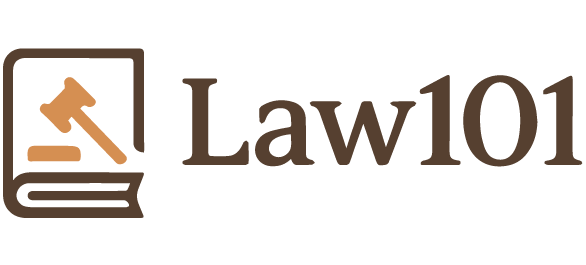Consumer Rights 101
How the law protects you when you shop

How the law protects you when you shop
Consumer Rights 101
Consumer rights form the backbone of fairness in the marketplace, ensuring that individuals are not left vulnerable when buying goods or using services. These rights exist to balance the relationship between buyers and sellers, giving people access to truthful information, safe products, and avenues for redress when things go wrong. At their core, they aim to protect individuals from exploitation, deception, or unfair practices, while at the same time encouraging businesses to act responsibly and transparently. By setting standards of honesty and accountability, consumer rights make it possible for markets to function with trust and efficiency, benefiting both consumers and companies.
These protections extend far beyond the act of handing over money in a shop. They cover digital purchases, online subscriptions, financial services, healthcare interactions, travel bookings, and countless other exchanges in daily life. For instance, when a person buys a household appliance, they expect it to function as described and without hidden defects. If it fails, the law provides remedies such as repair, replacement, or refund. Similarly, advertising standards require that businesses present accurate information about their products, preventing exaggeration or misleading claims. This framework ensures that choice in the marketplace is genuine and informed, not manipulated.
Another important dimension of consumer rights is the protection of personal data. As commerce increasingly shifts online, privacy safeguards ensure that individuals’ financial and personal information is handled securely and not exploited for unauthorized purposes. Whether a purchase is made in-store or through a website, the principles of transparency, honesty, and accountability apply equally.
But rights alone are not enough; they only achieve their purpose when consumers are aware of them and willing to act. Many disputes are resolved not in courtrooms but through clear communication between customers and businesses. Other times, consumer organizations or dispute resolution bodies help mediate claims. The availability of these mechanisms empowers people to stand up for themselves, preventing small issues from becoming large injustices.
In the bigger picture, consumer rights also encourage innovation and quality. Businesses that prioritize fair practices build loyalty and reputation, while those that ignore their responsibilities often face penalties, loss of trust, and long-term damage. This balance between responsibility and accountability is what allows commerce to flourish while keeping individuals protected.
Here are three important aspects to remember:
- Fairness in every transaction: Rules ensure that people are treated honestly and given accurate information about what they are buying.
- Protection across many areas: From food safety to online payments, these rights extend to nearly every aspect of daily commercial life.
- Access to remedies: When something goes wrong, consumers have a right to pursue solutions, whether through refunds, repairs, or compensation.
Core Principles of Consumer Rights
The foundation of consumer protection rests on several principles that are widely recognized across different markets. These principles form the pillars that guarantee not only fairness but also dignity in commercial interactions.
The right to safety ensures that products and services do not expose individuals to unnecessary risks. From electronics to food, businesses are required to test, label, and design their goods with user safety in mind. Similarly, the right to information gives consumers access to honest and complete details, so they can make informed decisions rather than being misled by confusing labels or vague promises.
Choice is also a fundamental element. The right to choose protects access to a variety of products at competitive prices, preventing monopolistic practices that could trap consumers into poor quality or overpriced options. Beyond choice, the right to be heard allows individuals to voice complaints, share concerns, or influence policies that affect them. This ensures that the consumer’s perspective is considered, not ignored.
Redress is equally crucial. The right to redress gives consumers the ability to claim fair remedies when products or services fall short. This can mean a refund for a defective item, repair of a faulty product, or compensation for misleading information. Alongside this, the right to education recognizes that people must be equipped with knowledge and tools to understand and act on their rights effectively. Without awareness, rights remain meaningless.
Finally, modern interpretations also emphasize the right to a sustainable environment, acknowledging that consumption should not come at the cost of long-term well-being or ecological balance. Products and practices that harm the environment ultimately harm consumers too, and protecting against such risks is part of the broader vision of consumer rights.
These principles do more than protect individuals; they shape the marketplace into one where accountability and fairness are the norm rather than the exception.
Frequently Asked Questions
Understanding consumer rights often comes down to real-life situations where people wonder what protections actually apply. These common questions help clarify how rights work in practice.
A warranty is a promise from a seller or manufacturer that a product will meet certain standards. If the item fails within the warranty period, the consumer is entitled to repair, replacement, or refund. Importantly, warranties complement—rather than replace—basic consumer rights that already exist.
The first step is to contact the business and request a solution such as repair, replacement, or refund. If the issue is not resolved, consumers can escalate the matter to protection agencies or consider legal action. Having proof of purchase and clear documentation of the problem is always helpful.
Yes, online transactions carry the same protections as in-person purchases. Consumers are entitled to accurate descriptions, safe payment methods, and often a “cooling-off” period during which they can cancel an order. Security of personal and financial data is also a protected right in online exchanges.
Yes, along with rights come responsibilities. Consumers are expected to use products safely, make informed choices, and be truthful in their interactions with businesses. Reporting unsafe or misleading practices is also part of building a fair marketplace.
Keywords
Consumer Rights
Consumer Protection
Product Safety
Fair Practices
Redress
Warranties
Online Shopping
Transparency
Dispute Resolution
Consumer Education







